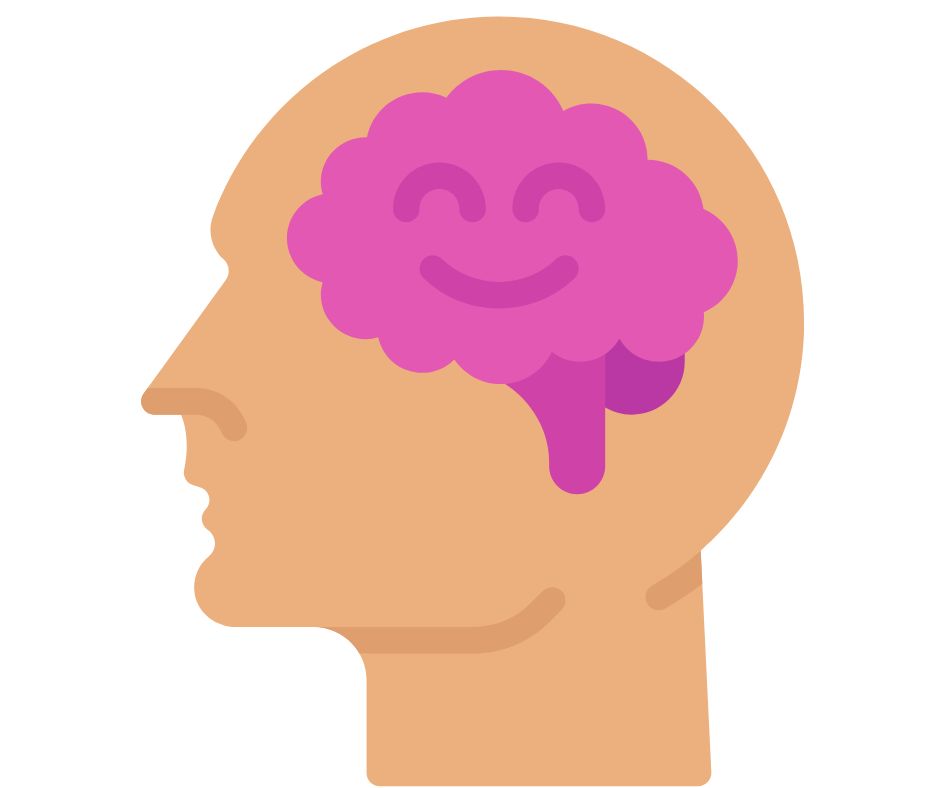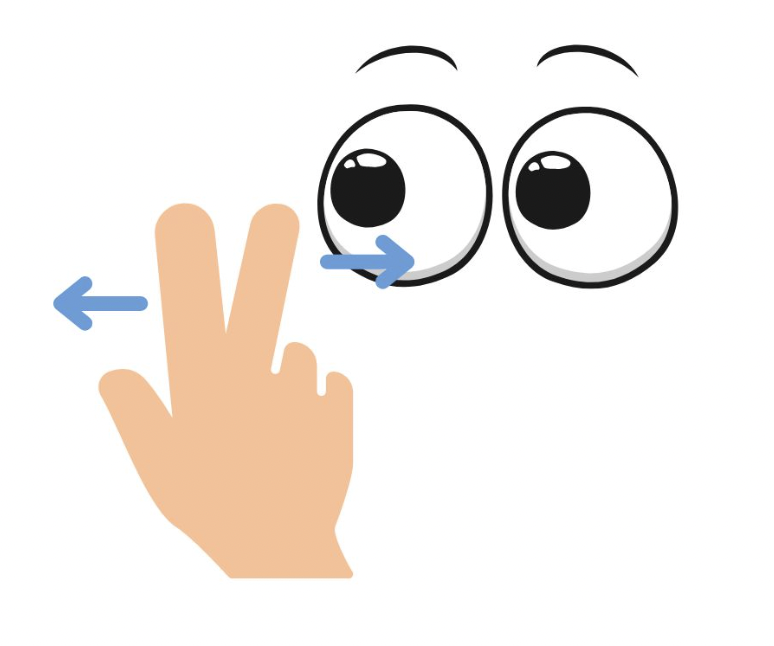Written by Eleanor Jones, Clinical Psychologist, J&R Psychology.

EMDR is a trauma-focused therapy that uses “bilateral physical stimulation” – rapidly moving your eyes back and forth – to allow the brain’s natural memory processing system to work. Moving our eyes to help heal trauma might sound a little unusual, so let’s consider it further to understand it better.
EMDR therapy is based on the idea that during a traumatic event, emotions become so overwhelming that our mind’s memory system does not process the event in the same way as other, non-traumatic, everyday experiences. This leaves trauma memories stuck, kept separately in the brain and disconnected from existing memory networks. This means that traumatic memories are easily triggered, bringing with them all the emotions, thoughts, and physical feelings that are linked to the trauma. It is thought that by integrating these trauma memories into the broader memory system, the memories become less vivid and emotional, and negative beliefs linked to the trauma can change, helping to resolve PTSD (Schubert & Lee, 2009).
Most commonly, EMDR therapy uses eye movements to activate the brain’s memory processing system, but other options include using taps or tones. But, these are only one part of a complex therapy. EMDR therapy has a clear and structured process that a trained EMDR clinician follows to help clients gain the most benefit from treatment.
How does EMDR work?
The exact workings of EMDR are not clearly understood. It is thought that EMDR therapy can be explained through information-processing theory (Foa & Kozak, 1986). This theory suggests that some distressing events are processed in people’s minds with relative ease, but other distressing events turn into memories that persist and are experienced as traumatic. Information-processing theory suggests that anxiety related to a traumatic event is due to “pathological fear structures in memory.” Trauma memories may end up being stored in an unhelpful way because during trauma, the thinking part of the brain doesnt work as well and doesn’t process the memory properly before it’s stored away. Memories that are stored in these unhelpful fear structures are difficult to process with rational thought, are associated with strong bodily anxiety symptoms, and tend to remain unchanged, causing ongoing ongoing anxiety.
The aim of EMDR therapy is to store the memories in a helpful way, rather than an unhelpful way that keeps the anxiety going. There are several ideas based on this information-processing theory as to how EMDR may work, and there is a growing research base behind these hypotheses.
One of the ideas explaining how EMDR therapy works is that EMDR activates a process that is also seen in Rapid Eye Movement (REM) sleep. REM sleep is when our mind processes our new memories from the day. During this stage of sleep, our eyes move quickly back and forth. So, by using eye movements in EMDR therapy, it may trigger the mechanisms in the brain needed to integrate traumatic memories into the other memory networks, helping to process them and put them in the past.
Although it is uncertain exactly the way that EMDR therapy produces change, there are two decades of research supporting its use and outcomes, and EMDR is recommended as a treatment option for adults with PTSD.

What can I expect from EMDR treatment?
EMDR has eight phases that provide a framework for the treatment. These are:
- History and treatment planning. This phase involves mapping out the person’s history and developing a plan together with their clinician. But, in EMDR, none of the traumatic events need to be discussed in detail – just enough to develop a plan for what memories to work on together.
- Preparation. This phase focuses on learning skills to help manage any difficult emotions that come up during therapy and between appointments. It also allows time to build a trusting and safe relationship between the client and the therapist, which is important for successful EMDR therapy.
- Assessment. In this phase, the memory “targets” are identified and explored so that they are ready to be processed in the next step. This does not mean talking about them in depth. Instead, it means selecting a specific mental image from the target event that best represents the memory, and identifying the negative beliefs and feelings that go with that image.
- Desensitisation. This is the first phase of treatment that involves rapid eye movements. The EMDR clinician leads the client through a series of eye movement sets, until their distress reduces. The client is first asked to focus on their target memory, but then as eye movements continue, the client will notice other things coming to mind – it may be another memory, thought, feeling, or something else. Whatever it is, the client is asked to simply notice it.
- Installation (or Integration). In this phase, the client concentrates on and increases the strength of the positive belief that they would like to replace their original negative belief that went with their traumatic memory. For example, a client might begin with an image of childhood abuse and the negative belief “I am powerless.” During desensitisation, the client realises that as an adult now, they have strength and choices that they did not have when they were a child. So, this stage focuses on installing their positive belief, “I am now in control.”
- Body scan. At this phase, the client is asked to bring their original target image to mind and check if there is any leftover feelings of tension or discomfort in their body. If so, these sensations are then targeted for further reprocessing. An EMDR session is not considered complete until the client can bring up that original target without feeling any tension in their body.
- Closure. This phase ends each treatment session, with the aim to ensure that the client always leaves the session feeling better than they did at the start. If the processing of the event is not yet complete, that is okay. There are other ways the clinician can assist the client to feel calm again before leaving. The client is always in control during the session and will be able to use the tools they have to manage any emotional distress between the sessions. It is normal for the brain to continue to process memories for a few days after an EMDR session, so clients are often encouraged to use a journal to note down what else comes up, and to remind themselves of what calming techniques they can use.
- Re-evaluation. This phase starts each new session. It is essential to help see progress and change over time and to identify any further targets for reprocessing. Although it is common to feel relief almost immediately with EMDR, it is important to complete all eight phases of the treatment, just like it is important to complete a whole course of antibiotics, even if you are already feeling better.
Is EMDR right for me?
There are many options for trauma-focused therapy for people experiencing PTSD, complex trauma, or other trauma-related concerns. EMDR will not be right for everyone and it is important that you talk through your options with your clinician. Other treatment options for trauma include cognitive processing therapy, cognitive therapy, prolonged exposure, or trauma-focused cognitive-behavioural therapy.
Interested in learning more on this topic?
EMDR Animation: A short YouTube video explaining how EMDR helps heal trauma.
References:
https://www.emdr.com/francine-shapiro-ph-d/
https://www.emdr.com/what-is-emdr/
Eye Movement Desensitisation and Reprocessing – 2022 workshop presented by Associate Professor Christopher Lee www.psychology-training.com.au
Schubert, S., & Lee, C. W. (2009). Adult PTSD and its treatment with EMDR: A review of controversies, evidence, and theoretical knowledge. Journal of EMDR Practice and Research, 3(3), 117-132.
https://www.sleepfoundation.org/stages-of-sleep/rem-sleep


